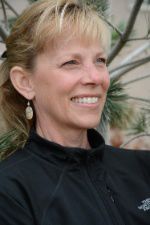“See, it’s not a straight shot back, from war to the Jacksonville mall.” – Phil Klay, “Redeployment”
Over 60 years ago, Western journalist and scholar Bernard De Voto published a modest proposal in Harper’s Magazine titled “Let’s Close the National Parks.”
He could’ve written it yesterday as a response to a proposal for hefty fee increases to visit our most popular national parks, including Grand Canyon, Arches, Canyonlands, Zion and Bryce Canyon. After itemizing problems with our national park system – hordes of tourists overwhelming facilities, campground squalor, crumbling infrastructure, inadequate staffing – he facetiously concluded: “Only one course seems possible. The national park system must be temporarily reduced to a size for which Congress is willing to pay. … Meanwhile letters from constituents unable to visit Old Faithful, Half Dome, the Great White Throne, and Bright Angel Trail would bring a nationally disgraceful situation to the really serious attention of the Congress which is responsible for it.”
De Voto used his national forum to spotlight a crisis. Then as now, America’s national parks were neglected while tens of thousands of America’s soldiers and sailors returning from war used the parks to recover from unimaginable horror.
Perhaps they knew what returning warriors through the ages seem always to have known: Nature has resiliency-building and restorative power.
We can always call for more research on new treatments, new drugs for the men and women who defend our country, as well as new clinical protocols to deal with an expanding array of physical and mental health problems stemming from combat that all too often accompany our veterans home, including post-traumatic stress, traumatic brain injury, adjustment disorder and other debilitating damage to mind and body, writes the Sierra Club’s Stacy Bare in the foreword of “This Land Is Your Land,” a collection of essays edited by faculty members of the Parks, Recreation and Tourism Program at the University of Utah and Clemson University.
“Such investments can be beneficial, but in isolation they rarely make enough of a positive difference in the lives of men and women in uniform to really and truly welcome them home,” Bare writes. “What else, then, is necessary for their successful transition back into civilian life? A simple walk around the block is a good start. From these first few steps to a leisurely hike with family and friends, to tying a fly and casting it into a clear-flowing stream to building up to ascending the tallest of our nation’s mountains, all are part of what constitutes and supports a healthy path home and, in many cases, recovery.”
Unlike De Voto, I am not suggesting that national parks be closed. His essay, however, tapped a groundswell of public frustration over government inaction. Visitation continued to grow throughout the park system in the post-World War II years, as did political pressure forcing Congress to finally act with the passage of Mission 66, a 10-year program beginning in 1956 that pumped millions of dollars into the National Park Service.
The current crisis calls for similarly bold action.
Ours is a society in which more and more people live sedentary lives indoors. Researchers are finding that exposure to the natural world might not be a luxury but a necessity for healthy living. The proposed fee increase would not only make it harder for Americans of modest means to live healthier through access to their parks, it likely would impair the ability of many of our most vulnerable veterans to reclaim their lives. (Active-duty service and disabled veterans would not see fee increases under Secretary Ryan Zinke’s proposal.)
Many Americans might dismiss a day trip to Canyonlands National Park as leisure activity more or less comparable to a few hours at Disneyland. For a vet returning from Afghanistan or Iraq, however, a sunset hike up a bluff, a random discovery of 1,000-year-old artifacts of human habitation perched in the cranny of a red-rock cliff, or a crystalline night spent staring at the canopy of creation could be part of a life-saving re-creation.
Kelly Bricker, PhD, is program director of Parks, Recreation and Tourism at the University of Utah in Salt Lake City. Her opinion does not necessarily reflect the views of the University of Utah.



